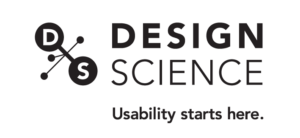Philadelphia
123 S. Broad Street, Suite 1350
Philadelphia, PA 19109
T 215.627.4122
F 215.627.4335
Chicago
909 Davis Street, Suite 470
Evanston, IL 60201
T 312.584.0240
F 215.627.4335
Germany
Blütenstraße 15
80799 München
Germany
T +49.(0)178.876.7277
Get in touch
We conduct rigorous research to optimize the usability, safety, and customer appeal of products. Contact us to discuss a project today.

Design Department Attends First Annual SciViz Conference
This month, Design Department team members watched the sun rise over the New York City skyline while traveling to attend the first annual SciViz Conference. This day-long symposium on data visualization and other intersections of science and art showcased the great diversity and nuance of work in this field—and effectively turned the notion of science visualization as a clear-cut, linear process of data input to infographic output on its head. Our two Design Researchers, Christina Stefan and Yeri Kim, and our Design Intern, Audrey Blanchard, attended. Read more
DS Designer Creates Downloadable Organ Icon Set
Looking for icons to represent all the sections of the brain? How about an icon representing a bodily system like the nervous system? As a company that often uses iconography to create easily understood deliverables, we often find ourselves scrolling through a host of websites, looking for specific medical icons without success. Read more
The European Perspective: American Work Culture
This year, Design Science is excited to host our first ever international short term employees! Audrey and David both have European backgrounds, living and working in France and Germany, respectively, before joining Design Science. Audrey is working in the Design Department and David is working with our Human Factors team. We asked them to speak a little about the work culture of the United States, versus the working culture of their home countries. Read more
Recruiting and Communicating Value
The research that we do at Design Science is truly multidisciplinary; with experts in psychology, cognitive science, engineering, anthropology, and videography, we cover a pretty large range of academic and professional specializations.
As consultants, our jobs are to align all these perspectives into a cohesive and comprehensive research design. Whether in the field or the lab, we use our multidisciplinary composition to get the most out of interactions with the users we study. In the Ethnography Department, specialists in anthropology, design, videography, and recruiting communicate across disciplines to capture real-world users in their professional environments. Read more
Verification Vs. Validation: Twin Cities in the Land of Design Control
Verification and validation are two critical elements of product development. One informs the elements of a product’s design, while the other looks at those design elements in the hands of users. Although often used synonymously, these alliterative terms sit on opposite sides of the product development life cycle. Read more
5 Tips for Your First Study in a Necropsy Lab
Why Use Cadavers?
The study of human anatomy using cadavers dates back to roughly 300 BC, when the Greek physician Herophilus started to use dissection to understand human anatomy. Since then, cadavers have served as a major aid to education and research. For medical students learning anatomy and surgeons perfecting their instrument techniques, cadavers provide physical training materials. What’s more, human cadaver tissue can be used to gain important information about product development and use on human tissue before the device is used in clinical settings. Read more
The Unique Insights of Home Visits
At Design Science, our research most often focuses on the environments of medical professionals—ORs, cath labs, clinics. Yet some of the most rewarding research I have conducted here has involved visiting patients’ homes. Accompanied by a videographer, I’ve traveled past cornfields and baseball diamonds to meet families that are coping with serious conditions and investigate how they are wielding the medical tools and technologies they need to lead fuller and more independent lives. Read more
Getting to the Root
Human behavior can be hard to predict and even harder to explain. Study participants will often manage to do similar things in different ways, and they’ll rarely work with the same tools with equal proficiency.
What seems chance, or random, for one participant may be choice, or regular, for another. But the difference between chance and choice is critical when evaluating medical devices. Read more
A Guide to Trainings
As a recent addition to the Design Science team, I know that there is a steep learning curve when it comes to the specific tools and skills needed for usability testing. There’s a lot to learn, from the nuances of interview styles and follow-up questioning to the requirements of study documentation and reporting. Thankfully, an effective training program can make all the difference when navigating this curve.
What makes a good training program? How do you prepare for one? Are all trainings created equal? Read more
Design Science Attends Eyeo Festival 2016
How can experiencing information be poetic? What tools are at the forefront of data visualization? Should (ro)bots be designed more like C3PO or Iron Man? Read more